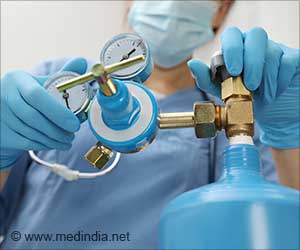Artificial hearts may provide the “bed rest” needed for heart muscles to regenerate, offering new hope for heart failure patients!

Few people with artificial hearts (left ventricular assist devices, or LVADs) can regenerate heart muscle. A team at the Sarver Heart Center at the University of Arizona College of Medicine in Tucson has made a major advancement in treating heart failure(1✔ ✔Trusted Source
A Latent Cardiomyocyte Regeneration Potential in Human Heart Disease
).
The Centers for Disease Control and Prevention estimate that heart failure accounts for 14% of annual deaths in the United States and affects around 7 million adults. Heart failure cannot be cured, however, drugs can delay or slow the progress. A left ventricular assist device, which can aid the heart in pumping blood, is the only treatment for severe heart failure besides a transplant.
After injury, skeletal muscle has a considerable capacity for regeneration. Hesham Sadek, MD, PhD, stated that if you tear a muscle while playing soccer, you should rest it so it heals. Heart muscles do not regenerate after injury. Nothing can stop the loss of cardiac muscle.
The project began with tissue from artificial heart patients provided by colleagues at the University of Utah Health and School of Medicine led by Stavros Drakos, MD, PhD, a pioneer in left ventricular assist device-mediated recovery.
Jonas Frisén, MD, PhD, and Olaf Bergmann, MD, PhD, of the Karolinska Institute in Stockholm, led teams in Sweden and Germany and used their innovative method of carbon dating human heart tissue to track whether these samples contained newly generated cells.
The investigators found that patients with artificial hearts regenerated muscle cells at more than six times the rate of healthy hearts.
“This is the strongest evidence we have, so far, that human heart muscle cells can regenerate, which is exciting because it solidifies the notion that there is an intrinsic capacity of the human heart to regenerate,” Sadek said.
Advertisement
“It also strongly supports the hypothesis that the inability of the heart muscle to ‘rest’ is a major driver of the heart’s lost ability to regenerate shortly after birth. Targeting the molecular pathways involved in cell division may be possible to enhance the heart’s ability to regenerate.”
Finding better ways to treat heart failure is a top priority for Sadek and the Sarver Heart Center. This study builds on Sadek’s prior research into rest and heart muscle regeneration.
Advertisement
Role of Artificial Hearts in Stimulating Cardiac Muscle Regeneration
In 2011, Sadek published a paper in Science showing that while heart muscle cells actively divide in utero, they stop dividing shortly after birth to devote their energy to pumping blood through the body nonstop, with no time for breaks.
In 2014, he published evidence of cell division in patients with artificial hearts, hinting that their heart muscle cells might have been regenerating.
These findings, combined with other research teams’ observations that a minority of artificial heart patients could have their devices removed after experiencing a reversal of symptoms, led him to wonder if the artificial heart provides cardiac muscles with the equivalent of bed rest in a person recovering from a soccer injury.
“The pump pushes blood into the aorta, bypassing the heart,” he said. “The heart is essentially resting.”
Sadek’s previous studies indicated that this rest might benefit the heart muscle cells, but he needed to design an experiment to determine whether patients with artificial hearts were regenerating muscles.
“Irrefutable evidence of heart muscle regeneration has never been shown before in humans,” he said. “This study provided direct evidence.”
Next, Sadek wants to figure out why only about 25% of patients are “responders” to artificial hearts, meaning that their cardiac muscle regenerates.
“It’s not clear why some patients respond and some don’t, but the ones who respond can regenerate heart muscle,” he said. “The exciting part now is to determine how we can make everyone a responder because if you can, you can cure heart failure. The beauty of this is that a mechanical heart is not a therapy we hope to deliver to our patients in the future – these devices are tried and true, and we’ve been using them for years.”
Reference:
- A Latent Cardiomyocyte Regeneration Potential in Human Heart Disease- (https:www.ahajournals.org/doi/10.1161/CIRCULATIONAHA.123.067156)
Source-Eurekalert



